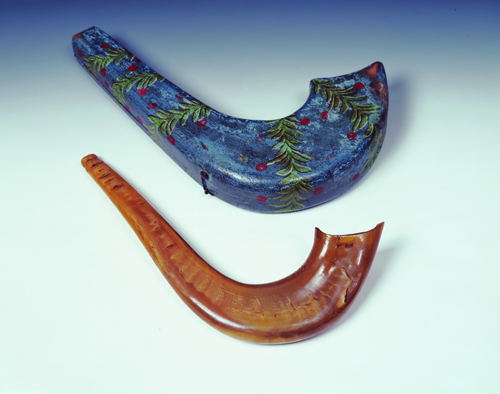Jewish Life
Synagogue & Communal Life
Since its inception, The Magnes Collection has focused on documenting the public sphere of Jewish ritual. The thousands of ritual objects in the collection originate from the entire Jewish Diaspora, including Europe, Asia, North Africa, the Middle East, and the Americas, and present a unique opportunity to study the dynamics of Jewish public life from a variety of perspectives.

Synagogue and communal life is represented in the collection by a wide spectrum of item types including: architectural fragments from synagogues in Europe, Asia and the United States, Torah scrolls and objects used to read them and embellish them, and other objects specifically created to be used in performing a variety of rituals.
Ritual objects highlight how synagogue life differs greatly among varied communities and thus provide insight into specifics of different Jewish cultures. The dynamic set of ritual behaviors that govern general synagogue life as well as the performance of particular rituals allow for better understanding of the cultural histories of the communities from which these objects come.
An expanding item list (with approximate item counts, when available) includes:
Torah and other Ritual Objects and Texts
- Torah Scrolls: 20
- Torah Arks: 15
- Torah Ark Curtains: 50
- Torah Mantles: 75
- Torah Binders: 200
- Torah Finials: 50 pairs
- Torah Pointers: 100
- Hebrew Bibles: n/a
- Prayer books and manuscripts: n/a
- Shofar horns: 25
The space of the synagogue
- Mizrach, Shiviti and other devotional plaques (synagogue wall hangings): 150
- Synagogue architectural fragments and furnishings: 35
- Synagogue lamps: 200
Commual Life
- Memorial plaques
- Honorific awards
- Ephemera
Depictions of Synagogue and Communal Life
- Books
- Prints and drawings
- Documentary photographs
